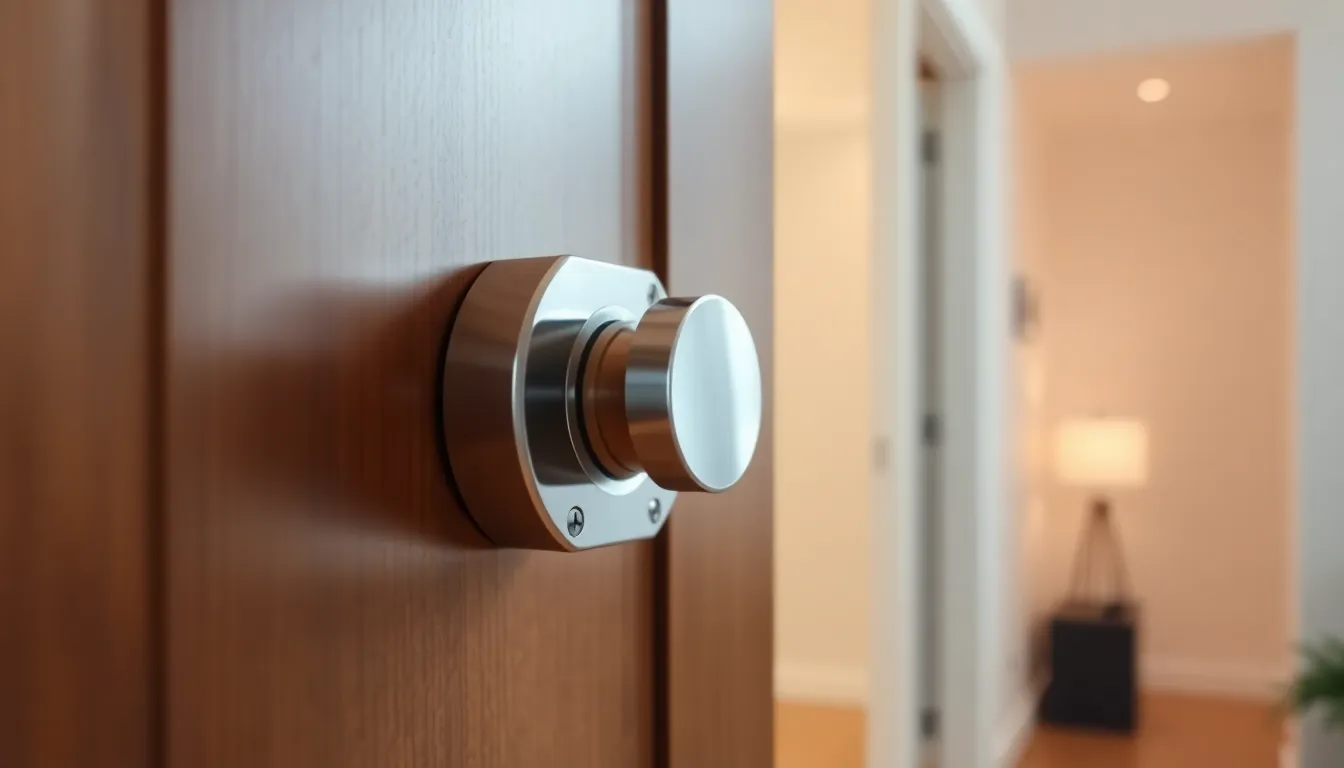Ever tried to open a door that seemingly has a mind of its own? Enter the door security latch, your tireless protector against unwanted guests, whether they be pesky relatives or more serious threats. Imagine having a silent bouncer stationed at your door, ready to keep everything safe and sound. Let’s jump into the world of door security latches, exploring what they are, their various types, and why they’re essential in your home. Spoiler: They’re not just there for show.
Table of Contents
ToggleWhat Is a Door Security Latch?

A door security latch is a mechanism designed to secure a door by preventing it from being opened from the outside without the appropriate key or tool. Think of it as the first line of defense in your security arsenal. These devices work by engaging with a strike plate on the door frame, holding the door firmly in place until released. They come in various designs, each tailored to meet specific security needs. Some latches are integrated into locks, while others function as standalone units. Understanding their operation is crucial for recognizing their importance in home safety.
Types of Door Security Latches
Not all latches are created equal. Here are a few types often encountered:
- Spring Bolt Latch: Common in residential doors, these latches lock automatically when the door is closed. Simply give it a pull to engage.
- Deadbolt: Considered a heavyweight in the security world, a deadbolt offers superior resistance against forced entry. It’s usually operated by a key or thumb turn.
- Slide Bolt: This latch slides into a bracket on the door frame, offering a simple yet effective way to secure your door, particularly in less-traveled areas.
- Chain Latch: Often used for additional security without fully locking the door, a chain latch allows limited opening, providing a barrier without complete exposure.
- Keyless Entry Latch: High-tech meets practicality here. Equipped with digital keypads or biometrics, these devices offer modern conveniences without sacrificing security.
Exploring these options equips homeowners with the knowledge needed to make informed choices.
Importance of Door Security Latches
Why invest in a solid door security latch? Let’s count the reasons:
- Deterrent Against Burglars: A visible latch can deter potential intruders who may think twice about attempting entry into a secured property.
- Peace of Mind: Knowing the door is secure provides a psychological comfort, allowing residents to sleep soundly.
- Protection from Weather: A sturdy latch ensures doors remain tightly shut, reducing the chances of wind or rain causing damage.
- Enhanced Privacy: By using a robust latch, individuals can control access, keeping prying eyes or unwelcome visitors at bay.
- Compliance with Safety Standards: For landlords and businesses, having appropriate door security latches can ensure compliance with safety codes.
Choosing the Right Door Security Latch
Selecting the perfect door security latch involves assessing several factors:
- Understand Your Needs: Evaluate the level of security your door requires. High-risk areas and residential homes may call for different solutions.
- Material Matters: Choose latches made from durable materials like stainless steel to ensure longevity and resistance against tampering.
- Compatibility: Ensure the latch fits seamlessly with your existing door and frame setup. Incorrect fitting can compromise its efficacy.
- Ease of Use: Consider how frequently the door is accessed and choose a latch that balances security with convenience.
- Aesthetic Considerations: Finally, design matters. A latch should complement the overall aesthetic of your home while serving its purpose.
Installation and Maintenance Tips
Installing and maintaining a door security latch can dramatically enhance its lifespan and functionality:
- Follow Manufacturer Guidelines: Always refer to the installation instructions that come with your latch. Each design has specific steps for optimal performance.
- Use the Right Tools: A drill, screwdriver, and a level should be part of your toolkit to ensure precise installation.
- Check for Alignment: After installation, check the alignment of the latch with the strike plate. Misalignment can lead to vulnerabilities.
- Regular Upkeep: Periodically inspect the latch for any signs of wear or rust. Lubricating moving parts can ensure smooth operation.
- Replace When Necessary: If a latch shows signs of damage, don’t hesitate to replace it. Security lags when equipment is subpar.
Common Issues and Solutions
Even the most reliable door security latches can face issues:
- Latch Doesn’t Engage: Ensure the latch and strike plate are aligned. Adjusting the strike plate’s position can often resolve the issue.
- Difficulty Operating: If a latch feels sticky or hard to operate, dirty or rusted parts may be the culprit. A good cleaning and some lubricant can work wonders.
- Incompatible Door Frame: Sometimes, the doorframe doesn’t complement the latch type. In such cases, look for adjustable latches or consult a professional.
- Weak Security: If a latch can be easily forced, consider upgrading to a deadbolt or more robust latch for better security.



